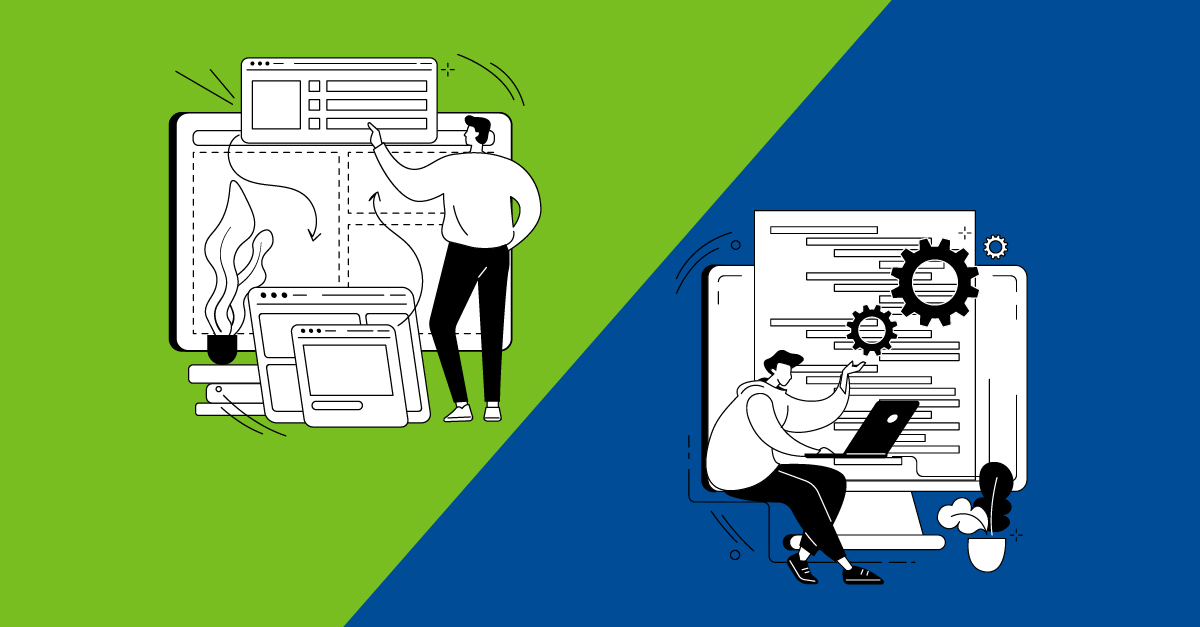Navigating the payment processing industry may be daunting for new business owners. If you’re unfamiliar with payment processing, getting a firm understanding of it is another task you’ll have to manage on top of all the other facets of opening your business.
Key Takeaways You Will Get From This Article
1. Front-end processing aims to collect information from the cardholder via the merchant and send it to the appropriate parties. This information is collected and routed through a payment gateway.
2. A payment gateway is a tool integrated within a merchant’s POS system or store and allows for payment card transaction processing.
3. The back-end process concerns the transmission of the sale data to the card network, the issuing bank, and the acquiring bank in any given transaction.
4. Find a merchant services provider that offers payment gateways and payment processing solutions tailor-made to your needs.
One important distinction you’ll need to know is the difference between front-end processing and back-end processing. What are they? What does each of them do? Can you have one without the other?
Luckily for you, Electronic Merchant Systems (EMS) has been helping businesses with their payment processing solutions since 1988.
In this article, we’ll go over front-end and back-end processing, so you’ll have all the information to make the best decision for your business.
- Payment Processing
- What is Front-End Processing
- Payment Gateways
- What is Back-End Processing
- Payment Networks
- How Front-End and Back-End Processing Work Together
- How Merchant Services Can Help
Payment Processing
Before we get into the differences between front-end and back-end payment processing, we must briefly overview what payment processing is in general.
In short, payment processing is the sequence of events that authorize and process credit and debit card payments.
Merchant services companies act as payment processing intermediaries to verify sales and funding as the money flows from the customer to your bank.
What is Front-End Processing?
You’re operating a record store, and you’re about to make a sale of the latest hit album. You ring up the record, and the customer decides to pay with their credit card.
Once the customer inserts their card into your point of sale system, their information gets routed from the merchant to the payment processor to verify the sale. This is front-end payment processing.
Aptly named, front-end processing kick starts the entire payment process. Front-end processing aims to collect information from the cardholder via the merchant and send it to the appropriate parties. This information is collected and routed through a payment gateway.
What are Payment Gateways?
A payment gateway is a tool integrated within a merchant’s POS system or store and allows for payment card transaction processing.
Anytime you’ve made a purchase online, you’ve navigated a company’s payment gateway. Payment gateways keep the customer’s and merchant’s data secure by encrypting the transaction information from the merchant to the payment processor.
Security Components of Payment Gateways
Let’s go over how payment gateways keep your information safe. Two key components make this happen:
- PCI Compliance –PCI stands for Payment Card Industry compliance and is a required set of standards set by the payments industry to ensure the safe transmission of funds.
- SSL Certificate – For eCommerce businesses, a Secure Sockets Layer (SSL) offers another tier of security by providing encryption between the customer and the website’s hosts. If you’ve ever seen “HTTPS” at the front of any web address, the “s” means “secure,” and this means the website has an SSL Certificate behind it.
A competent gateway solution will help you build trust with your customers and spur loyalty and returning business.
What is Back-End Payment Processing
Let’s go back to the record store. After the customer inserts their card, the payment gets processed, and your point of sale system tells you the payment has been accepted. What happened in the moments before the sale was accepted? The remaining steps of payment processing are referred to as back-end processing.
Essentially, the back-end process concerns the transmission of the sale data to the card network, the issuing bank, and the acquiring bank in any given transaction. We'll review how each component plays a role.
Payment Networks
Card Networks
Card networks refer to the type of debit or credit card the customer uses. Examples of card networks included Visa® and Mastercard®. Each card network charges a fee to the issuing and acquiring banks to process the transaction.
Issuing Banks
The issuing bank is the bank of the cardholder. The issuing bank will have to verify that the cardholder has enough funds to complete the transaction with the card network.
Acquiring Banks
The acquiring bank is the bank of the merchant. Once the card network has verified the cardholder’s funds, the card network sends the authorization to transfer the fund into the merchant’s bank.
How Front-End and Back-End Processing Work Together
Now that we’ve laid out the basics of front-end and back-end payment processing, let’s review the steps of the entire payment process:
- Your customer starts the transaction by selecting an item or service to purchase
- Your POS system collects the customer’s information and passes it to the merchant’s payment gateway
- The payment gateway encrypts the information is then sent to the payment processor
- The processor secures the information and sends it to the customer’s card network
- The card network reaches out to the issuing bank to verify the funds
- The issuing bank then sends an authorization request to your card network
- Your card network sends the authorization to your bank
- Your bank forwards the verification back to you, the merchant
- Finally, your POS system tells you the sale has been approved or declined
And these nine steps only take about 2-3 seconds to complete! Steps 1 to 3 would be an example of front-end processing, whereas steps 4 to 9 would be considered parts of back-end processing.
All that information going through those different channels is streamlined to get you back to running other aspects of your business. It would be quite laborious and time-consuming to conduct all those steps without a competent, efficient, and secure payment processing partner.
How Merchant Services Can Help
We’ve established that payment gateways and payment processors are integral to electronic transactions. Both are solutions offered by merchant services companies that allow merchants to streamline their businesses.
It’s best to find a merchant services provider that offers payment gateways and payment processing solutions tailor-made to your needs.
When shopping around for your merchant service provider, consider reaching out to Electronic Merchant Systems for your payment processing solutions.
Related EMS Blog Articles -
With a 4.7/5 Google Reviews rating and 1,000+ customer reviews, merchants across the country rely on our expertise to help them thrive and continue building their business.






